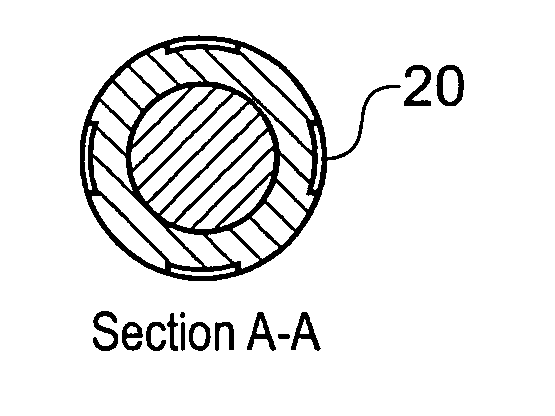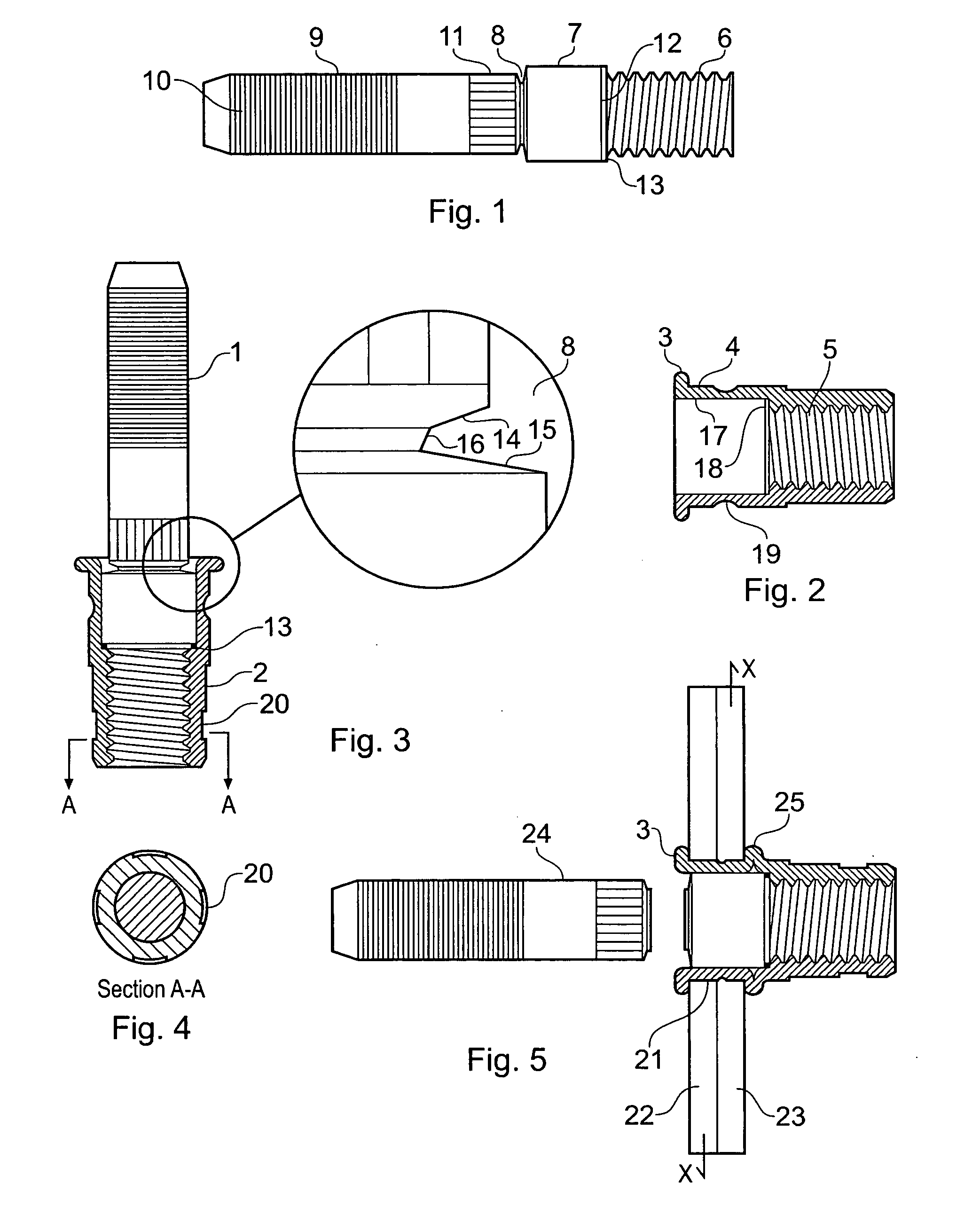Blind rivet
a technology of blind rivets and rivets, which is applied in the direction of fastening means, screws, dowels, etc., can solve the problems of requiring considerable remedial work to rectify failures, and achieve the effects of improving shear resistance, large bearing area, and convenient availability
- Summary
- Abstract
- Description
- Claims
- Application Information
AI Technical Summary
Benefits of technology
Problems solved by technology
Method used
Image
Examples
Embodiment Construction
[0039] Referring together to the attached Figures, the rivet shown comprises a mandrel 1 that is assembled to a threaded insert or rivet body 2 by screwing the threaded portion 6 of the mandrel into the rivet body 2 where it is staked or swaged such that it becomes an integral part of the rivet body.
[0040] Referring to FIG. 2, the rivet body is characterised by a flange 3, a thin walled collapsing portion 4 and an internally threaded portion 5. The internal bore of the rivet body 17, which determines the collapsing portion, meets the threaded portion in a shoulder 18. Rivet bodies of this type have only a small grip range typically about 1-1.5 mm so in order to improve this range a radial groove 19 is formed in the rivet body midway between the underside of the flange and the internal shoulder 18.
[0041] Referring to FIG. 1 the mandrel 1 is shown with a male threaded portion 6, an enlarged diameter portion 7, a breaker groove 8 and a tail or pulling portion 9 that is smaller in dia...
PUM
 Login to View More
Login to View More Abstract
Description
Claims
Application Information
 Login to View More
Login to View More - R&D
- Intellectual Property
- Life Sciences
- Materials
- Tech Scout
- Unparalleled Data Quality
- Higher Quality Content
- 60% Fewer Hallucinations
Browse by: Latest US Patents, China's latest patents, Technical Efficacy Thesaurus, Application Domain, Technology Topic, Popular Technical Reports.
© 2025 PatSnap. All rights reserved.Legal|Privacy policy|Modern Slavery Act Transparency Statement|Sitemap|About US| Contact US: help@patsnap.com


